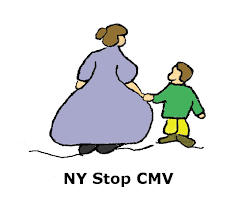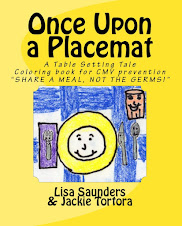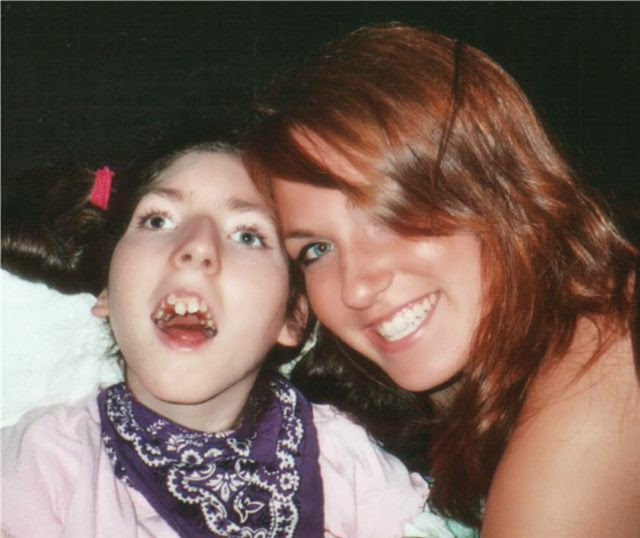What is cytomegalovirus (CMV)?
Between 50% and 80% of adults in the U.S. are infected with CMV by 40 years of age. It is the leading birth defects virus passed from mother to unborn baby. Congenital (meaning present at birth) CMV can cause disabilities in unborn babies such as hearing loss, mental impairment, and cerebral palsy. Disabilities from congenital CMV "exceeds those from the fetal alcohol syndrome, spina bifida, and childhood infections..."(Boppana and Fowler, 2017). About 1 out of 750 (or .1%) babies are born permanently disabled by congenital CMV. According to the CDC:
·
Approximately 1 in 200 children is born
with cCMV infection.
·
One in five babies [about 4,000 babies
annually] with cCMV infection will have long-term health problems.
Is this the “kitty
litter” disease?
No,
that is toxoplasmosis, which causes fewer
birth defects than cCMV.
How can CMV be avoided?
- · Wash hands often with soap and water for 15-20 seconds, especially after wiping runny noses, changing diapers, picking up toys, etc. If soap and water are not available, use alcohol-based hand gel.
- · Use soap and water or a disinfectant to clean hard surfaces that have been contaminated by secretions.
- · Don’t kiss young children on the lips or share food, drinks, or eating utensils with them.
SUMMARY: The CDC "suggests that pregnant women reduce their risk
of CMV acquisition during pregnancy using simple hygienic precautions but this suggestion is not often followed”
(Adler,
2015).
Why don’t doctors routinely
warn women of childbearing age about congenital CMV?
- Fewer than half (44%) of OB/GYNs surveyed reported counseling their patients about preventing CMV infection.
- Don’t want to frighten their patients: "The list of things we're supposed to talk about during women's first visit could easily take two hours and scare them to death.” (OB/GYN quoted in FitPregnancy magazine, June/July '08).
- In 2015, the American College of Obstetricians and Gynecologists (ACOG) stated that their patients will consider prevention guidelines difficult to implement—“especially if they are told not to kiss their toddlers on the mouth — a possible route of transmission.”(CMV Is a Greater Threat to Infants Than Zika, but Far Less Often Discussed, New York Times, 2016)
How many women know about
congenital CMV?
Only 9 % of women surveyed about CMV heard
of it (Doutre et
al., 2016).
What about a vaccine against CMV?
Researchers have been working on a vaccine against
HCMV (human cytomegalovirus) for years. One reason for delay in successful development
is “there
has been insufficient education about the problem of HCMV infection…”
What can we do to protect our children
from CMV?
Educate the public! “Despite
being the leading cause of mental retardation and disability in children, there
are currently no national public awareness campaigns to educate expecting
mothers about congenital CMV,” states Clinical Advisor article, “Educate pregnant women to prevent
congenital CMV” (2014). Pass a bill
similar Utah’s H.B 81
(2013) requiring cCMV prevention education
plus testing newborns for cCMV if they fail hearing screen tests so their
families can be educated about early intervention services
and treatment options. To test for CMV, a saliva or urine sample is collected from the newborn and sent to a
laboratory.
Cost of a CMV bill?
Example: in 2014, Connecticut put CMV prevention
education at $40,000 first year. Newborn hearing tests are already required in
CT (and most states) and insurance pays for CMV testing (estimated at $150) if
baby fails the hearing screen.
What is the annual
cost of caring for children disabled by cCMV in the U.S.?
“$1.86
billion annually, with a cost per child of more than $300,000, is the estimated
cost of congenital CMV to the US health care system” (Modlin, Arvin et al., 2004).
Annual cost of
caring for children disabled cCMV by state?
In 2015, 3,978,497 babies were born in U.S.
with .1%
disabled by cCMV = 3,978
babies. Example state: in 2015, Connecticut’s annual cost of caring for children disabled by cCMV can be calculated at 35,746
births x .1% cCMV disabled = 36 babies X $300,000/year = $10,800,000 or nearly
$11 million annually.
Which women
are at greatest risk for contracting CMV?
According to the CDC, "People who care for or work closely with
young children may be at greater risk of CMV infection than other people
because CMV infection is common among young children..."
1.
Parents of children in
day-care centers are at increased risk for contracting
CMV (Pass et al, 1986).
2.
Day-care workers
are at greater risk (Joseph, et al., 2006). Caregivers/teachers should be told about CMV because of increased
probability of exposure (American Academy of Pediatrics et al.. 2011). “Providers do not know how to appropriately sanitize surfaces ...”
Many providers use diapers wipes to clean a surface. Diaper wipes do not
sanitize (Thackeray et al., 2016).
Will it make a difference
if women are educated on CMV prevention?
Yes, according to the New York Times, “pregnant mothers shown a video and offered hygiene tips were much less
likely to get CMV (5.9 percent) than those not given information on prevention
(41.7 percent)” (Saint Louis, 2016). Five CMV prevention education
studies published between 1993 and 2015 were analyzed in the article, Prevention
of Maternal–Fetal Transmission of Cytomegalovirus: “In each report, the
efficacy of hygienic precautions has been > 75%...For seronegative
pregnant women who are at high risk because of exposure to a young child in the
home or in large group childcare, hygienic precautions are simple, inexpensive,
and highly effective” (Adler, 2015).









No comments:
Post a Comment